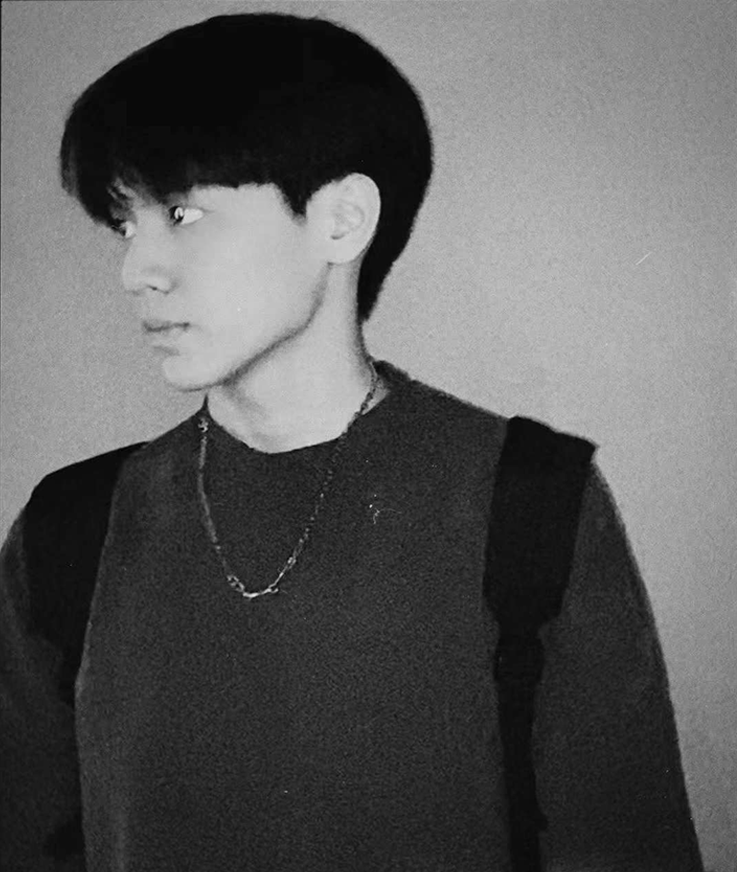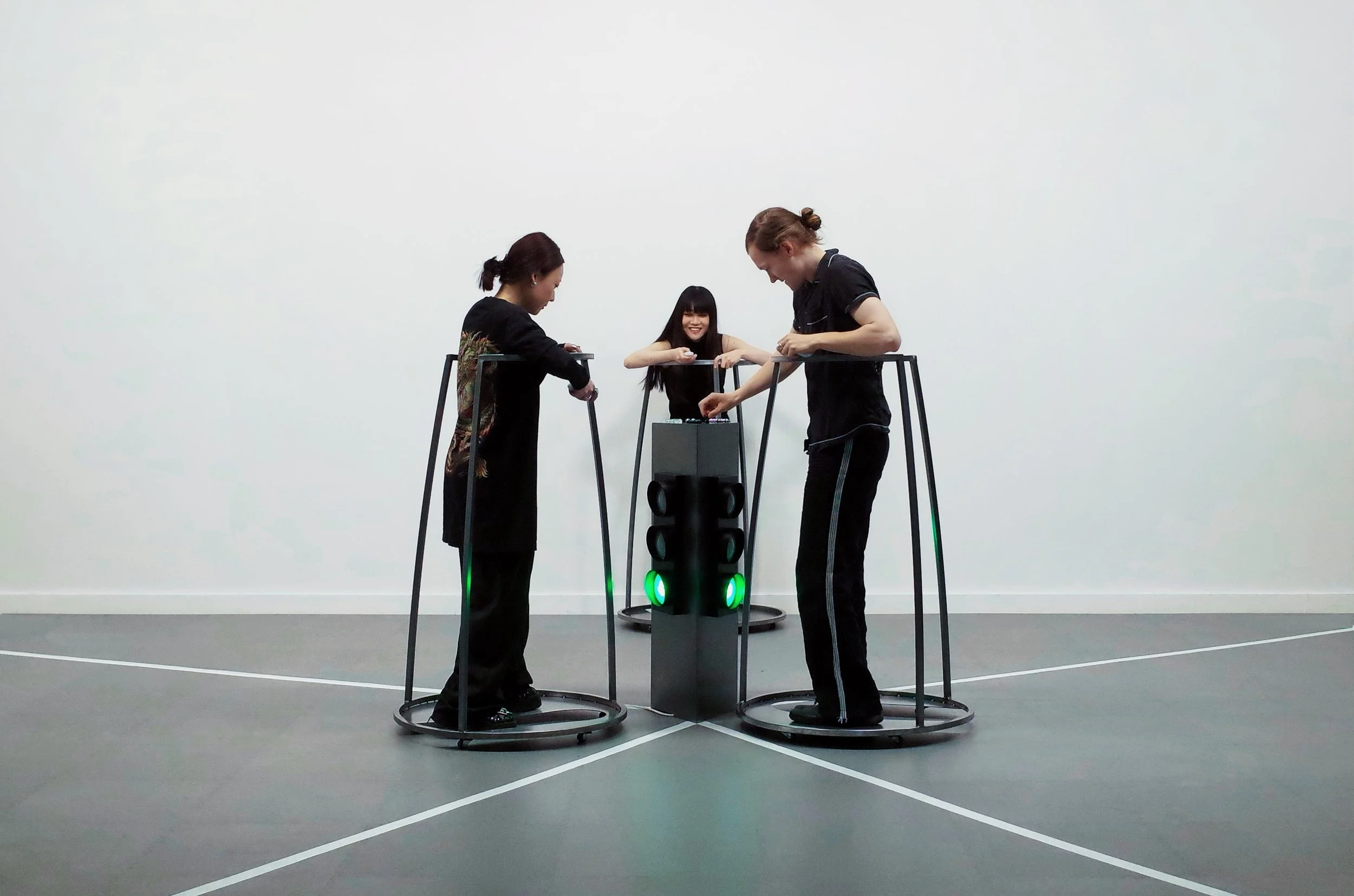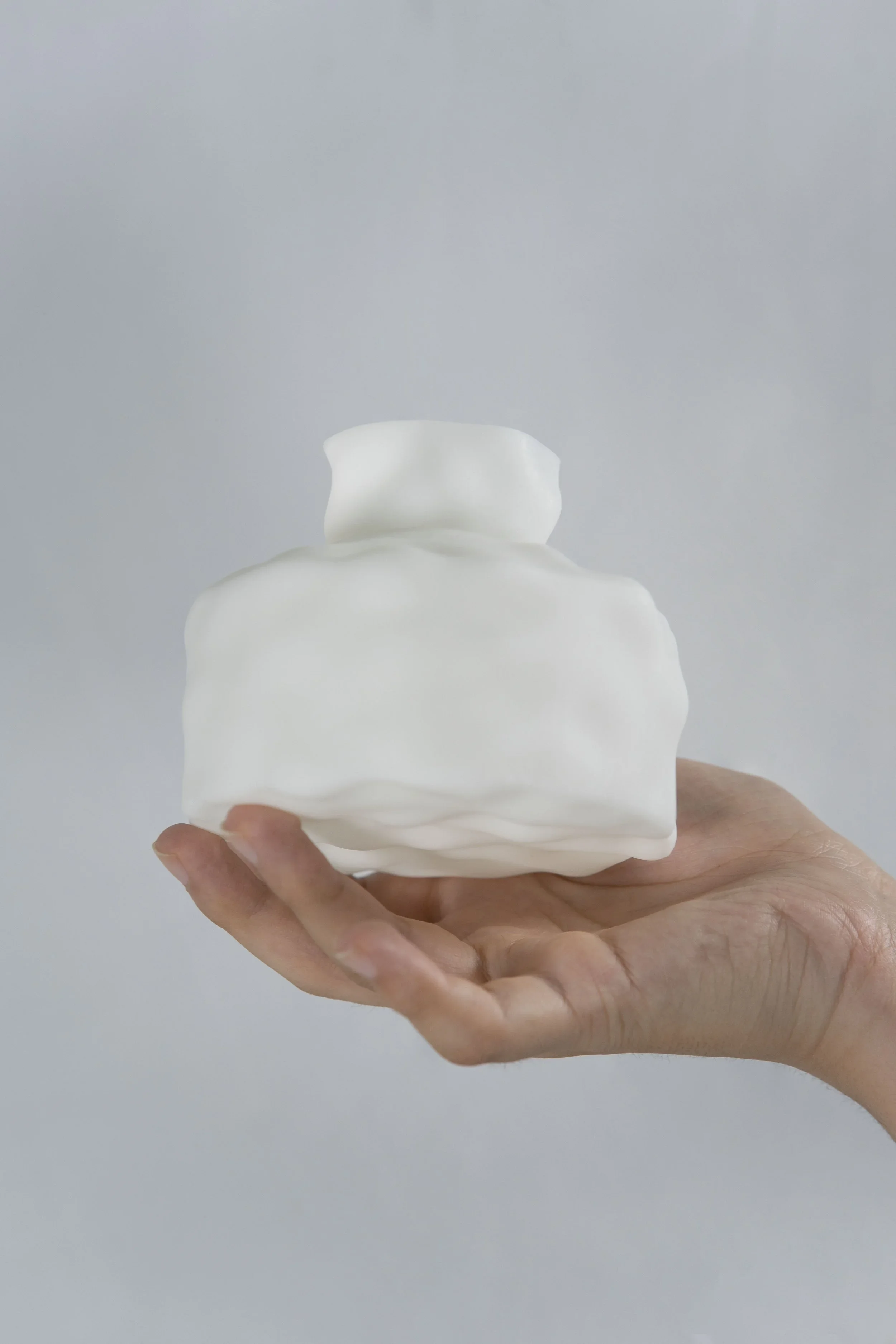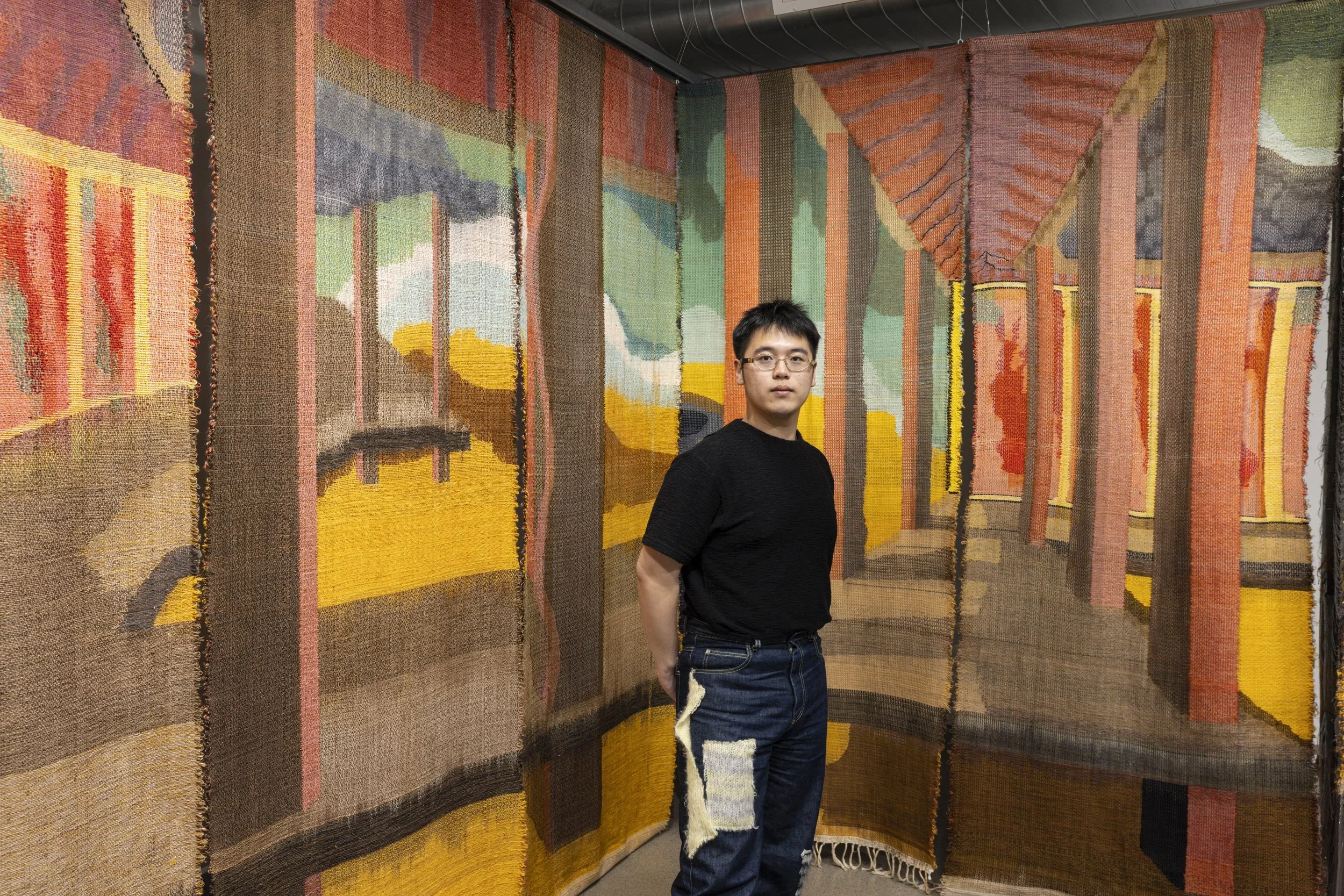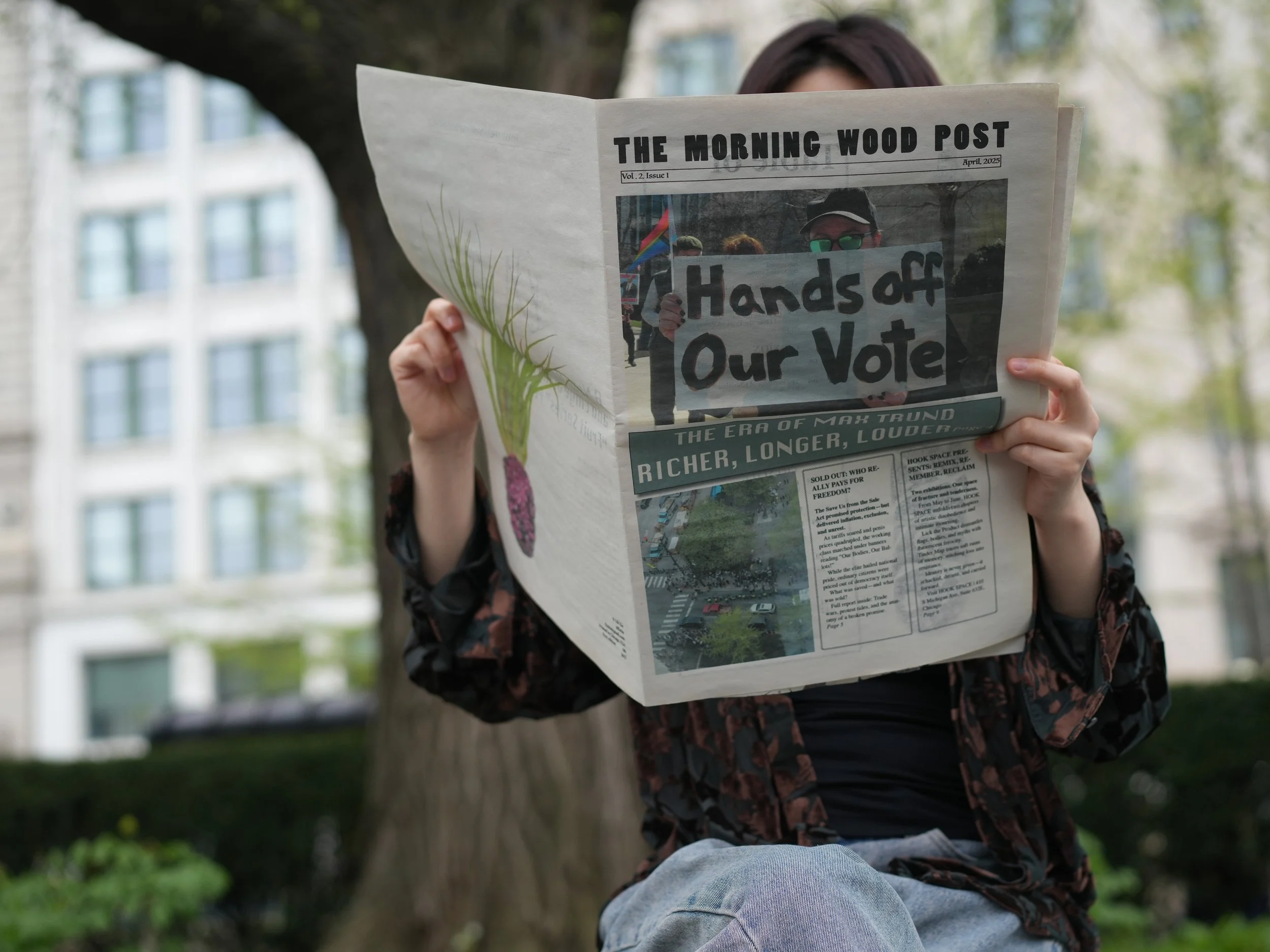10 Questions with Di Tian
Al-Tiba9 Art Magazine ISSUE15 | Featured Artist
Di Tian is a New York-based new-media artist from Chongqing, China. He received his B.F.A degree from the School of the Art Institute of Chicago and an M.F.A degree from the University of Pennsylvania. His art has been featured in a range of international exhibitions, publications, charity events, and so on, such as his solo exhibition "Mosquitoes Also Can Dream" at DAD in Beijing (2008), personal charity event "For Children of China" held by Amity Foundation in Shanghai (2011), his solo artworks collection published by Beijing Xiron Group (2013), "Contrasts" by Loosen Art Gallery in Rome (2021), and Chengdu Biennale (2023).
Di Tian - Portrait
ARTIST STATEMENT
Di's current artworks involve a variety of mediums, such as interactive/mechanical installations, 3D animation, coding art, experimental games, and more. Through his current interactive and time-based artworks, Di challenges the notion of art as a solitary experience. He invites the audience to engage deeply with his art, encouraging more than a cursory glance by fostering active participation and contemplation. His current body of work doesn't adhere to a specific theme; instead, it is a canvas for exploration that covers a diverse range of subjects, including folk culture, artificial intelligence, contemporary social issues, and so on. Regardless of the theme, Di always considers his works as a medium that can create a genuine connection and resonance with the audience rather than being a personal and privatized existence.
Hands Up Only, Interactive Installation, LCD screens, kinect, robotic arms, creative coding by Processing, 2022 © Di Tian
AL-TIBA9 ART MAGAZINE ORIGINAL ISSUE15
INTERVIEW
First off, let's talk about yourself and your background. What inspired you to pursue a career in the art world? And how did you develop into the artist you are today?
My art career began at the age of five with painting and drawing, channeling my imagination onto canvas and paper. Upon entering college, I decided to push myself out of my comfort zone, immersing myself in Art and Technology studies at SAIC, thereby transitioning into new-media art. This shift was swift and self-motivated. It was more like an impulsive idea - I was not told by anybody that I should make changes. Maybe I was just driven by my innate attraction to technology, which is a passion already rooted in childhood experiences with video games. With years of learning and utilizing different cutting-edge technologies, such as motion capturing, coding, and AI, I have become the artist I am today.
You come from China but studied in the US, where you are currently based. How do your cultural background and experiences inform the narratives and concepts within your artwork?
I believe my cultural background and experiences inform the narratives and concepts within my artwork through a blend of Eastern and Western perspectives. My work could embody traditional Chinese elements, philosophies, or aesthetics juxtaposed with contemporary Western influences. However, the most interesting part is that sometimes I need to produce two different versions of a single piece if it is to be brought back to China due to censorship constraints. Chinese artists face significant challenges in navigating censorship, which requires careful consideration to avoid depicting violence, political opinions, or any other sensitive content, but it is also interesting to see how this dual-version approach underscores the complexities of artistic expression within my identity as a Chinese artist who makes art in the U.S.
Hands Up Only, Interactive Installation, LCD screens, kinect, robotic arms, creative coding by Processing, 2022 © Di Tian
Can you share insights into your creative process? How do you refine your ideas and translate them into tangible forms?
My creative process is straightforward and intuitive. I currently don't engage in extensive research; instead, when inspiration strikes, I immediately gather materials to create small demos. If these initial tests are successful, I will proceed directly to the production phase. I design the components for my artwork from scratch, later involving my fabrication team for the build. However, although I conduct minimal research, I assign distinct purposes to every applied technology or selected element. They are not solely for spectacle; rather, I view them as integral components capable of effectively conveying my message to the audience within my works.
Your art has been featured in various international exhibitions and events, including solo exhibitions, charity events, and group showcases. How do you feel your work has been received and understood by different audiences around the world?
I've received feedback from audiences around the world, and I've noticed distinct differences in the way my work is perceived. For instance, during last year's Chengdu Biennale in China, I observed that local audiences were more focused on the appearance or functionality of my creations. This interest could stem from the fact that my art is interactive and incorporates various technologies and machinery; such fusion of art and technology, or new-media art, is still relatively rare in Chinese galleries and museums, drawing more attention to its form. In contrast, audiences from countries like the United States prioritize the concepts and ideas underlying my works, offering more critical feedback. Nonetheless, I believe these diverse perspectives all contribute positively to the evolution of my art.
Mother Father, Interactive Installation, Customized telescopic machine, sickbed, cloth, sensor, 2023 © Di Tian
Mother Father, Interactive Installation, Customized telescopic machine, sickbed, cloth, sensor, 2023 © Di Tian
When we are born, we are brought into this world in a hospital bed; as we age, we eventually end up in the same place as we approach the end of our lives - the beginning and the end life is a sickbed.
In the work Mother / Father, the artist Di utilizes 20 customized telescopic devices and makes them move in certain patterns by coding. With an irregular up-and-down movement, all the machines intend to mimic the breathing of a dying human lying on a sickbed. While the work stays silent and static without any audience interactions, the viewers are welcome to wake the living being on the bed by circling around the bed and triggering the sensor. “Without companionship, the life in the bed is no different than a corpse,” Di states, and he indeed tries to embed this thought into the interaction of this piece.
Di’s grandmother and grandfather passed away in the summer of 2023. Mother / Father is also a work for him to memorize his grandparents.
Your current artworks encompass a wide range of mediums, including interactive installations, 3D animation, coding art, and experimental games. What draws you to explore such diverse mediums, and how do they contribute to the narratives you create?
In my view, the various mediums I have experimented with all belong to a single category: new media or technology art. I'm essentially exploring its different components. I believe gaining expertise in diverse mediums is crucial, as it unlocks many creative possibilities for artmaking. When you become comfortable with using all of them, merging these mediums naturally follows, enabling you to convey your ideas in any form you desire without any restrictions. Applying different mediums also provides viewers with various aspects to see my works, and this is comparable to the process of writing a book, where the use of metaphors and varied sentence structures aids in effectively communicating the author's message. I think it is the same in the practice of art.
At the same time, as you mention in your statement, your current body of work "doesn't adhere to a specific theme; instead, it is a canvas for exploration that covers a diverse range of subjects," ranging from folk culture to artificial intelligence, and contemporary social issues. How do you navigate the complexities of addressing such varied themes in your art while maintaining a cohesive practice?
As I am comfortable in working with different mediums, exploring diverse themes becomes second nature. It is just about choosing the right materials and mediums. My lack of commitment to a single theme isn't a deliberate choice; rather, it stems from the fact that my inspiration arises spontaneously from moments that truly touch me. Naturally, being moved by different things means the themes of my work are ever-changing, and I see this neither as positive nor negative—it's simply my own work. Nonetheless, I'm open to the possibility that my approach might evolve in the future.
The Reborn, Interactive Installation, Customized pan-tilt platforms, customized repeater, security camera, head models, laser, 2021 © Di Tian
The Reborn, Interactive Installation, Customized pan-tilt platforms, customized repeater, security camera, head models, laser, 2021 © Di Tian
A group of artificially intelligent robots is equipped with their own self-awareness. They will use their laser eyes to capture the location of humans with rays shot at a uniform rate to your location. They will constantly lock on to you wherever you go, trying to drive humans out of their territory.
Your artist statement also emphasizes creating a genuine connection and resonance with the audience. How do you approach this goal in your artistic process, and what techniques do you employ to foster this connection?
I believe that interaction is the most effective way to resonate with the audience, transforming them from mere observers into integral components of the artwork. However, the inclusion of interactivity must be meaningful and enhance the underlying ideas rather than serving as a mere spectacle. For me, the message I want to deliver to the audience is the most important element that builds a real connection with the viewers. For instance, in my installation "Mother / Father," I designed its interactivity to be straightforward and relatively simple—allowing the audience to walk around the piece and activate a sensor. Despite the simplicity of this interaction, feedback from the viewers revealed that many were profoundly touched by the underlying theme instead of the interaction itself, which addresses the deep sorrow experienced by the loss of a loved one.
Can you discuss the significance of interactivity and time-based elements in your art? How do you see these elements transforming the viewer's experience and engagement with your work?
As I mentioned, I believe those elements hugely encourage audience engagement. I wish to make viewers stay in front of my pieces rather than just giving them a cursory glance. I've observed in myself a tendency to move quickly past paintings or sculptures in galleries or museums; instead, I'd rather spend more time in front of an interactive installation or finish watching a video work. Maybe it is just my own habits or preference, but I do extract and reflect on my own experiences as a viewer and try to make my works have different results.
The Sighing Me, 3D Animation (with narration) made with Blender in motion capture suit, 02' 16'', 2023 © Di Tian
Set in the milieu of contemporary China, The Sighing Me crafts a narrative centered around a young individual who was born in the 90s. Devastated by mediocre income, burden of a loan for a house left incomplete by the real estate developer, and the diminish of dreams, the protagonist finally decides to leave the city where his hope once lay and return to his hometown in the countryside.
Di heavily explores themes of disillusionment and anxiety that resonate with many young Chinese people today who also struggle for success amidst societal expectations and question the purpose of hard work, showcasing the inner turmoil of a generation caught between traditional values and modern challenges.
In what ways do you see your art contributing to broader conversations about technology, society, and human interaction, particularly in the context of contemporary art?
I think I am constantly pushing the boundaries of what technology can do. By experimenting with digital platforms, interactive installations, or AI, I am exploring new forms of expression and communication, maybe contributing a little to the evolution of contemporary art. By incorporating interactive elements or participatory experiences, I am also challenging the traditional notions of viewer engagement. This could stimulate conversations about the role of the audience in art, the nature of art experiences in the digital age, and how technology mediates human interactions.
And lastly, what is the next project you will showcase or exhibition you will participate in? Where can our readers find your work next?
The upcoming exhibitions where my work will be featured include my thesis show at Atelier Gallery in Philadelphia on March 21st, where I will show my latest installation. Following that, I will also be featured in the "4C EXHIBITION 2024 Q2" at 4C Gallery in Los Angeles on April 6th, a group exhibition that will showcase my newest animation, "The Sighing Me." The exhibition “Visual Culture 2024” on September 11 at the CICA Museum in Korea follows next.


